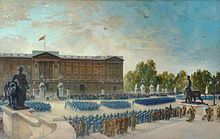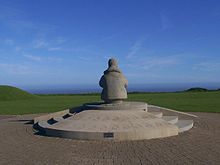
The Battle of Britain was a military campaign of the Second World War, in which the Royal Air Force (RAF) and the Fleet Air Arm (FAA) of the Royal Navy defended the United Kingdom (UK) against large-scale attacks by Nazi Germany's air force, the Luftwaffe. It was the first major military campaign fought entirely by air forces. The British officially recognise the battle's duration as being from 10 July until 31 October 1940, which overlaps the period of large-scale night attacks known as the Blitz, that lasted from 7 September 1940 to 11 May 1941. German historians do not follow this subdivision and regard the battle as a single campaign lasting from July 1940 to May 1941, including the Blitz.

Battle of Britain is a 1969 British war film directed by Guy Hamilton, and produced by Harry Saltzman and S. Benjamin Fisz. The film documents the events of the Battle of Britain. The film drew many respected British actors to accept roles as key figures of the battle, including Laurence Olivier as Air Chief Marshal Sir Hugh Dowding, Trevor Howard as Air Vice-Marshal Keith Park, and Patrick Wymark as Air Vice-Marshal Trafford Leigh-Mallory. It also starred Michael Caine, Christopher Plummer, and Robert Shaw as Squadron Leaders. The script by James Kennaway and Wilfred Greatorex was based on the book The Narrow Margin by Derek Wood and Derek Dempster.
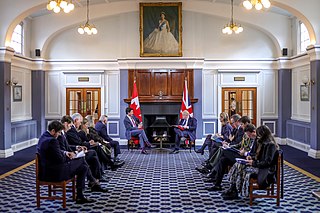
Royal Air Force Northolt or more simply RAF Northolt is a Royal Air Force station in South Ruislip, 2 nautical miles from Uxbridge in the London Borough of Hillingdon, western Greater London, England, approximately 6 mi (10 km) north of Heathrow Airport. As London VIP Airport, the station handles many private civil flights in addition to Air Force flights.

No. 603 Squadron is a squadron of the Royal Auxiliary Air Force, based in Edinburgh, Scotland. On reforming on 1 October 1999, the primary role of 603 Squadron was as a Survive to Operate squadron, as well as providing force protection.
The Royal Air Force (RAF) and Fleet Air Arm had included personnel from outside the United Kingdom from before the beginning of the Second World War, and many served in the Battle of Britain in summer 1940. Many of these volunteers were British subjects—thus, citizens—coming from territories that made up part of the British Empire. Additionally, a significant part was made up of refugees and exiles from German-occupied Europe and American emigrants.
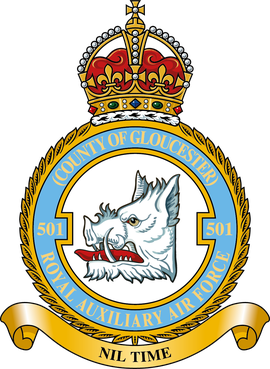
No. 501 Squadron was the 14th of the 21 flying units in the Royal Auxiliary Air Force, the volunteer reserve part of the British Royal Air Force. The squadron won seven battle honours, flying Hurricane, Spitfire and Tempest fighter aircraft during World War II, and was one of the most heavily engaged units in RAF Fighter Command. In particular, the Squadron saw extensive action during the Battle of France and Battle of Britain. At present the unit is not flying any more and has a logistics role as part of No 85 Expeditionary Logistics Wing.

Eric Stanley Lock, was a British Royal Air Force (RAF) fighter pilot and flying ace of the Second World War.

Brian Carbury, was a New Zealand fighter ace of the Royal Air Force (RAF) during the Second World War. He was officially credited with destroying 15+1⁄2 enemy aircraft.
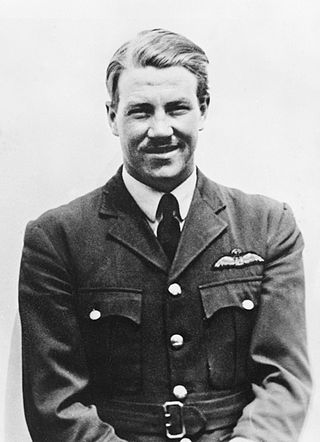
Paterson Clarence Hughes, was an Australian fighter ace of World War II. Serving with the Royal Air Force (RAF), he was credited with as many as seventeen aerial victories during the Battle of Britain, before being killed in action in September 1940. His tally made him the highest-scoring Australian of the battle, and among the three highest-scoring Australians of the war.

Squadron Leader Archibald Ashmore McKellar, & Bar was a flying ace of the Royal Air Force (RAF) during the Second World War.
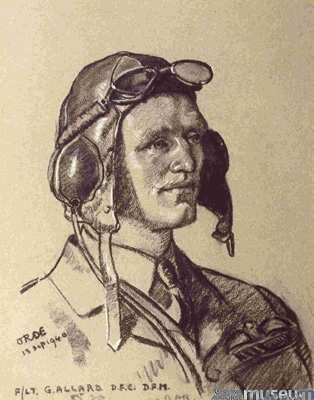
Flight Lieutenant Geoffrey "Sammy" Allard & Bar was a Royal Air Force (RAF) flying ace of the Second World War. Allard scored 19 victories against enemy aircraft, as well as five shared kills and two probable kills, during the war.

Number 601 Squadron is a squadron of the RAF Reserves, based in London. The squadron took part in the Battle of Britain, during which the first Americans to fly in World War II were members of the squadron.

Wing Commander Antoni (Toni) Głowacki DFC, DFM, was a Polish Second World War fighter pilot flying with Polish Squadrons attached to the Royal Air Force, who is notable for shooting down five German aircraft on 24 August 1940 during the Battle of Britain, becoming one of only four pilots who gained "ace-in-a-day" status during that battle, the others being New Zealander Brian Carbury, Englishman Ronald Hamlyn and Scot Archie McKellar.
Flight Lieutenant William Louis Buchanan Walker, AE was, at the time of his death, the oldest surviving pilot from the Battle of Britain. His poem "Our Wall" about the Battle of Britain is inscribed on a special plinth aside the Christopher Foxley-Norris Memorial Wall of the Battle of Britain Memorial, Capel-le-Ferne, Kent.
William Henry Franklin, DFM and Bar also known as Bill Franklin was a Royal Air Force fighter pilot and a notable Second World War flying ace decorated for gallantry twice, he shot down more than 13 enemy aircraft over the Dunkirk evacuation beaches and during the Battle of Britain before being killed in action.
Tadeusz Arentowicz was a Polish fighter pilot and ace during the Second World War. He served as a flight lieutenant in the Royal Air Force in the No. 303 Polish Fighter Squadron. He was B-group Flight Commander of the squadron. A week after his final promotion, in 1941, he was on a mission escorting bombers when his plane was shot down by a German fighter near Dunkirk over the English Channel; he was never found.

Flight Lieutenant Maurice Hewlett Mounsdon was a British pilot who flew with the Royal Air Force during World War II.
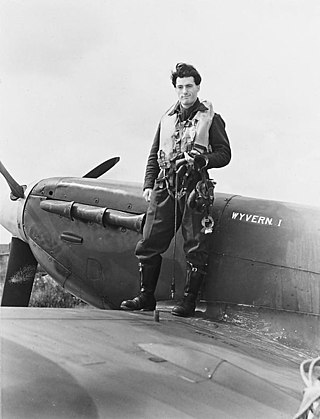
Alan Francis Eckford was a British flying ace of the Royal Air Force (RAF) during the Second World War. He was credited with at least eight aerial victories.


